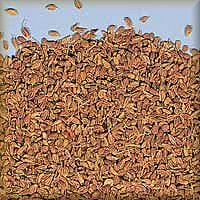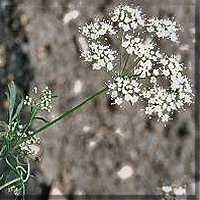

Pimpinella anisum


Pimpinella anisum
Family - Apiaceae/Umbelliferae (related to caraway, cumin, dill and fennel)
Parts used - The seeds and young leaves
Purported actions - Aromatic, Carminative, Diurectic, Expectorant, Galactagogue
Origins - Anise is native to the Middle East and eastern Mediterranean.
Edible Parts - Anise is an annual plant, which grows about 18 inches to 2 feet high. It has feathery leaves, the lower leaves are broad, toothed and triangular with upper leaves that are smaller, divided and narrow. It has umbrella-like clusters of dainty, creamy-white flowers and thin roots. The seeds are grey-green to brownish, ribbed and ovate, measuring 2 -4 mm (.08 -.16 in) long they have the flavor of licorice and the aroma of sweet fennel.
Medicinal Uses - It is said to help with digestion and to sweeten the breath, so it is chewed after meals in parts of Europe, the Middle East and India. It is a mild expectorant, anise often being used in cough mixtures and lozenges. It is also antiseptic, antispasmodic, soporific and a few seeds taken with water will often cure hiccoughs. It is said to promote estrogen production and is used to encourage breast milk, ease childbirth, and stimulate the libido. Anise should not be confused with Star Anise (Illicium verum) - used in production of Roche's drug Tamiflu (Oseltamivir Phosphate) - which is said to reduce the severity of avian flu.